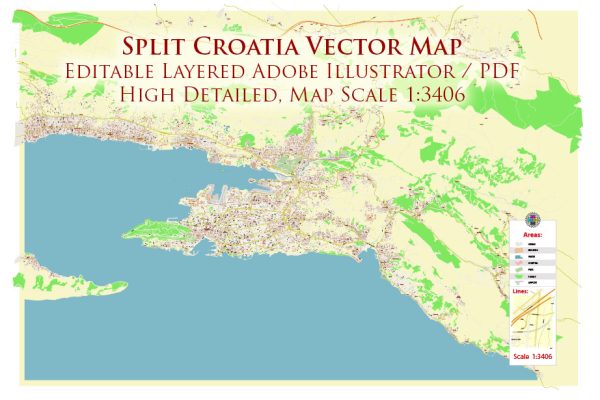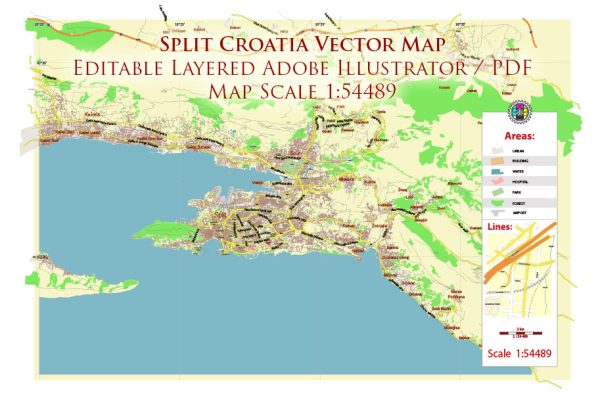Split, Croatia is one of the country’s most prominent coastal cities, and its urban development reflects its rich history and its modern aspirations. Here’s a description of the urban development of Split:
- Historical Heritage: Split’s urban development is anchored in its historical heritage. At its core is the UNESCO-listed Diocletian’s Palace, a Roman palace built for the Emperor Diocletian in the 4th century. The palace remains the heartbeat of the city, with its ancient walls forming the backdrop for a thriving urban center.
- Diocletian’s Palace: The palace is not merely a tourist attraction; it’s a living, breathing part of the city. It houses shops, restaurants, and residences within its walls. This unique blend of ancient architecture and contemporary life is one of Split’s defining features.
- Old Town: The Old Town of Split, which surrounds the palace, is a maze of narrow streets, alleyways, and squares. Here, you’ll find historical buildings, churches, and museums, alongside modern shops and cafes. The tightly packed buildings and historic streets provide a charming atmosphere for both residents and visitors.
- Riva Promenade: Stretching along the waterfront, the Riva promenade is a popular gathering place. It’s lined with cafes, bars, and restaurants, offering stunning views of the sea and a place to socialize, relax, and enjoy the Mediterranean climate.
- Marjan Hill: To the west of the city center is Marjan Hill, a lush green oasis offering hiking trails, pristine beaches, and panoramic views of the city. This urban park provides a much-needed escape from the bustling city, attracting locals and tourists alike.
- Harbor and Transportation: Split’s harbor is one of the busiest in the Adriatic, serving as a gateway to the nearby islands and providing economic opportunities for the city. The harbor area has seen development with improved transportation infrastructure and modern facilities.
- Residential Expansion: Split’s urban development extends beyond the historical core. Residential neighborhoods have expanded into the surrounding areas, providing housing for the city’s growing population. Newer buildings and developments incorporate a mix of architectural styles.
- Tourism and Hospitality: The city’s urban development has been heavily influenced by tourism. Numerous hotels, hostels, and private accommodations cater to the needs of travelers. The tourism sector has led to the growth of restaurants, bars, and entertainment venues, making Split a vibrant destination for visitors.
- Cultural Scene: Split has a thriving cultural scene with theaters, galleries, and events throughout the year. The city has adapted to modern cultural demands while preserving its historical roots.
- Challenges and Sustainability: Like many urban areas, Split faces challenges such as traffic congestion, infrastructure maintenance, and sustainability concerns. Efforts are being made to address these issues while preserving the city’s unique character.
Split’s urban development combines the best of its historical heritage with a modern and vibrant lifestyle. The city’s ability to adapt to the needs of its residents and visitors while respecting its ancient roots makes it a captivating destination on the Dalmatian coast.



 Author: Kirill Shrayber, Ph.D.
Author: Kirill Shrayber, Ph.D.